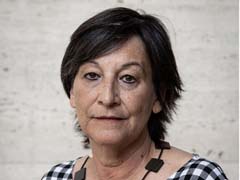Her approach to architecture shows clear sensitivity towards the urban condition, from the standpoints of practising the profession as well as reflection and education.
Carme Ribas (Barcelona, 1956) is to be president of the Jury of the eighth edition of the European Prize for Urban Public Space, for which the call for entries will be made next week, while the awards are to be known in June 2014. Ribas has already been a Jury member in 2006, when she was its secretary. Now she will be its first woman president after the seven previous editions in which it has been presided over by other eminent Barcelona architects liike Oriol Bohigas (2000 and 2004), Josep Lluís Mateo (2002), Elías Torres (2006), Manuel de Solà-Morales (2008), Rafael Moneo (2010) and Josep Llinàs (2012).
Throughout her years of considerable professional experience, Ribas has approached architecture with clear sensitivity towards the urban condition, from the standpoints of practising the profession as well as reflection and education. She began to work as an architect with the Urban Projects Service of the Barcelona City Council (1980 – 1987), as a member of which she took part in the democratisation of the public spaces of a city that was emerging from four decades of dictatorship and mediocrity. Since 1985, the studio she shares with Pere Joan Ravetllat has played a significant role in the development of projects ranging from social housing, to public facilities, through to improvement of urban spaces, always remaining true to their view that architecture should serve the city and society. Notable examples of her work, which has appeared in national and international journals, are the recovery of the riverbed in the Vallparadís Gully (Terrassa, 2001) and the remodelling of Passeig de Garcia Fària (Barcelona, 2004), both of which have been published in the digital archive of the Prize.
After obtaining her degree at the Barcelona School of Architecture (ETSAB-UPC), from which she also has a Master’s degree in Landscape Architecture, Ribas has continued her academic relationship with the School, where she teaches Landscaping and Architectural Project. Among her more recent contributions as a thinker is the chapter La permanencia de las infraestructuras (The Permanence of Infrastructure) in the book Arquitectura e infraestructuras (Architecture and Infrastructure, ed. Elías Torres, Fundación Esteyco, Madrid, 2011) and her section in Habitar millor: converses sobre habitatge (Better Inhabiting: Conversations about Housing, Foment de les Arts i del Disseny – FAD, Barcelona, 2008).



